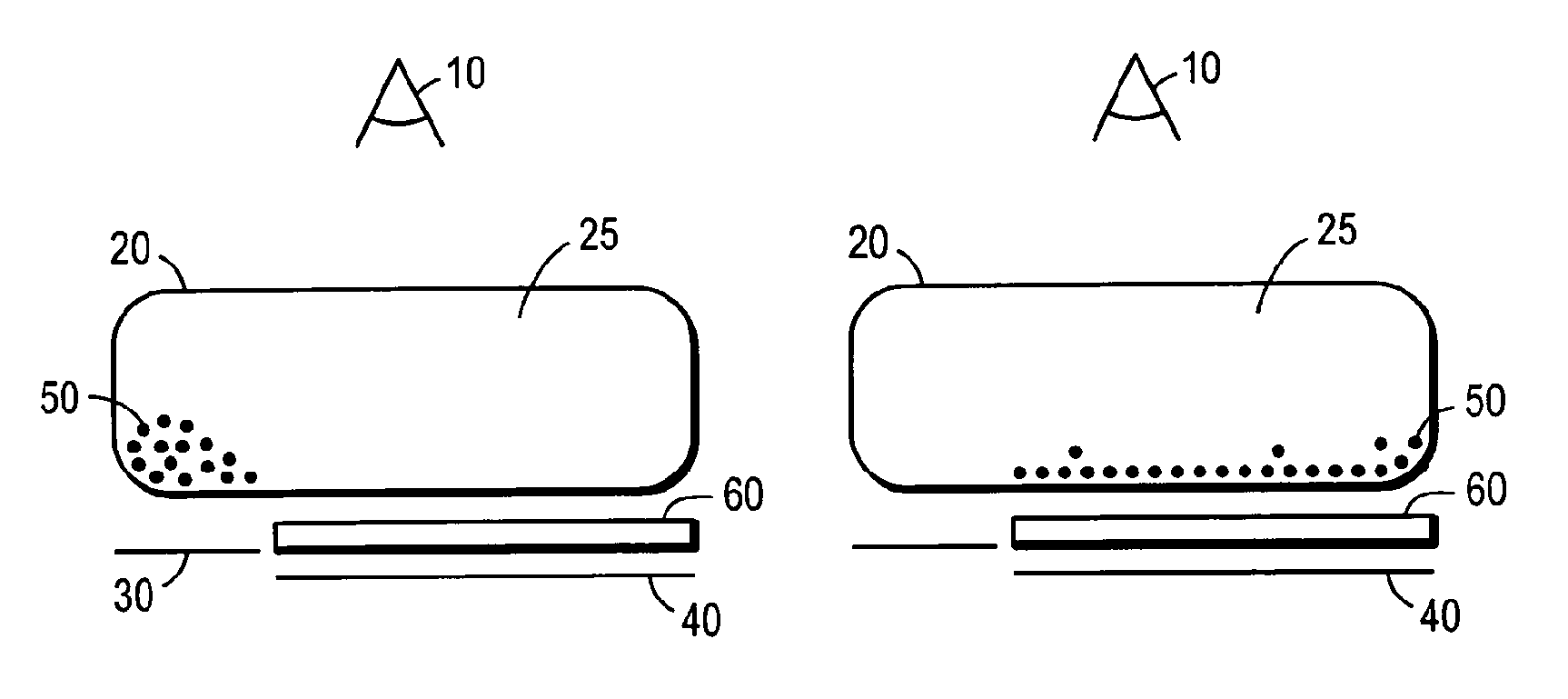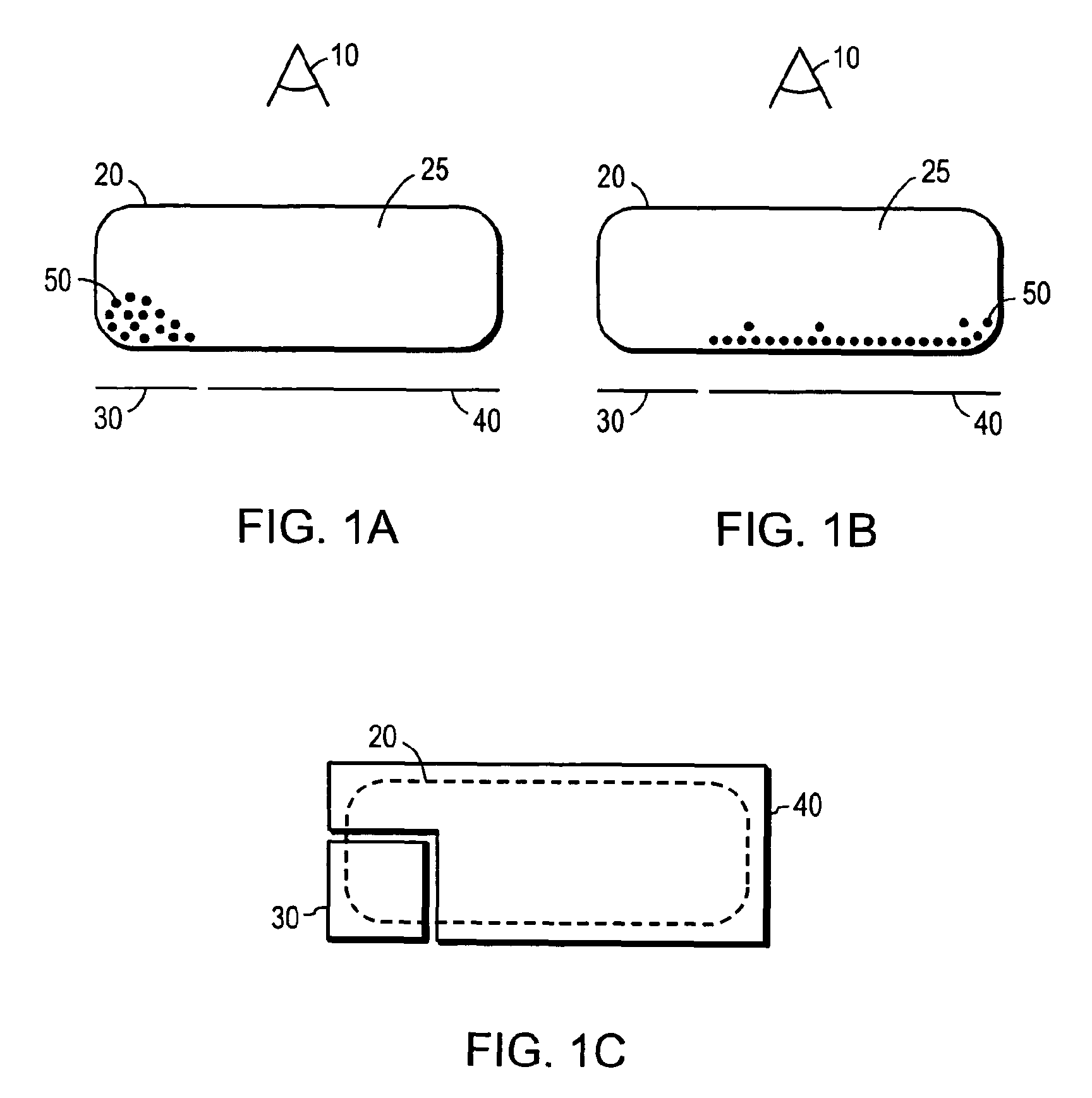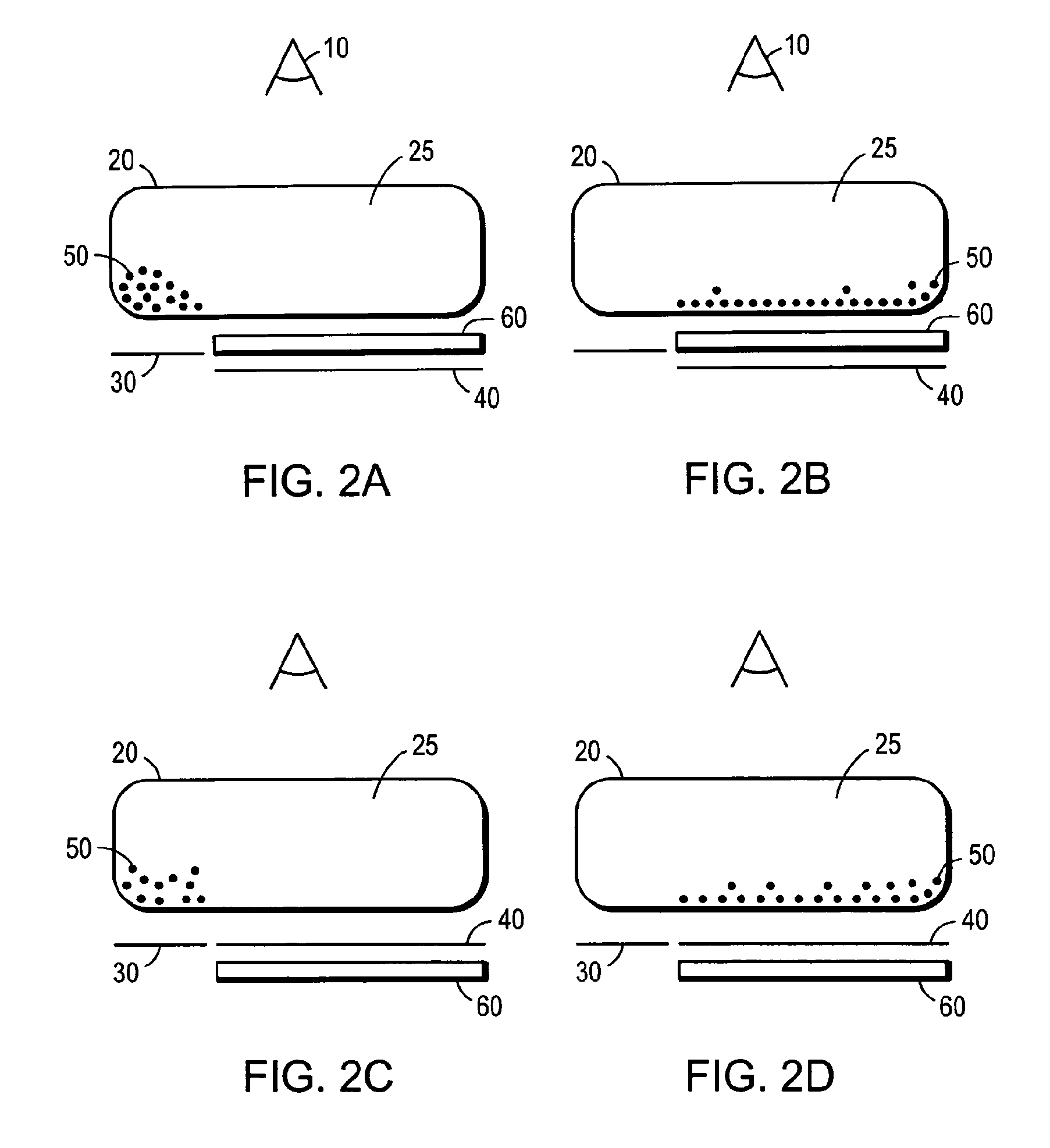Electrophoretic displays with controlled amounts of pigment
a technology of controlled pigments and electrophoretic displays, applied in the field of electrophoretic displays with controlled pigments, can solve the problems of irregular microcavities in microcavity electrophoretic displays, inadequate service life of these displays, and widespread use, and achieves convenient visualization, avoid visible artifacts, and simplify the position of color filters with respect to pixel electrodes
- Summary
- Abstract
- Description
- Claims
- Application Information
AI Technical Summary
Benefits of technology
Problems solved by technology
Method used
Image
Examples
example
[0154]An internal phase was prepared comprising 10 percent by volume white particles and 1 percent by volume black particles (carbon black) by volume in a hydrocarbon suspending fluid; the internal phase had a viscosity of 4.75 mPa sec. The white particles comprised titania and had an average size of approximately 0.6 μm and a saturation particle thickness estimated at 1.5 to 2.5 μm. The internal phase was encapsulated in gelatin / acacia microcapsules substantially as described in Paragraphs [0069] to [0074] of U.S. Patent Publication No. 2002 / 0180687. The resultant microcapsules were separated into three batches differing in wet capsule diameter size distributions. Each batch was mixed into a slurry with a polymeric binder, coated to form an electrophoretic film, and laminated to a back electrode to form a switchable display pixel, substantially as described in Paragraphs [0075] and [0076] of the aforementioned 2002 / 0180687. During the coating process, suitable equipment settings su...
PUM
| Property | Measurement | Unit |
|---|---|---|
| thickness | aaaaa | aaaaa |
| thickness | aaaaa | aaaaa |
| height | aaaaa | aaaaa |
Abstract
Description
Claims
Application Information
 Login to View More
Login to View More - R&D
- Intellectual Property
- Life Sciences
- Materials
- Tech Scout
- Unparalleled Data Quality
- Higher Quality Content
- 60% Fewer Hallucinations
Browse by: Latest US Patents, China's latest patents, Technical Efficacy Thesaurus, Application Domain, Technology Topic, Popular Technical Reports.
© 2025 PatSnap. All rights reserved.Legal|Privacy policy|Modern Slavery Act Transparency Statement|Sitemap|About US| Contact US: help@patsnap.com



